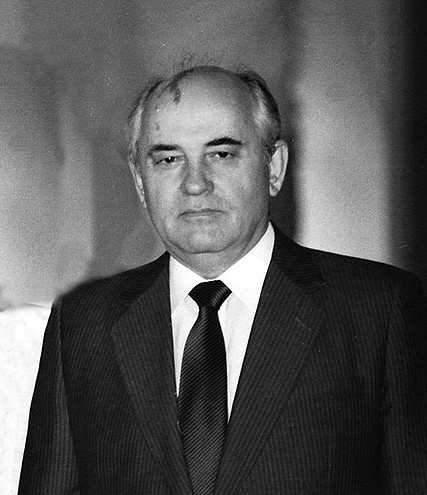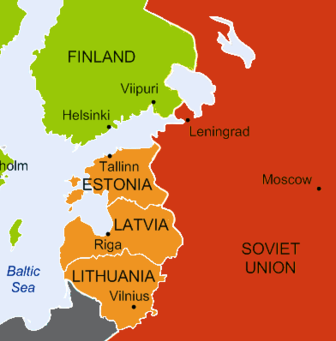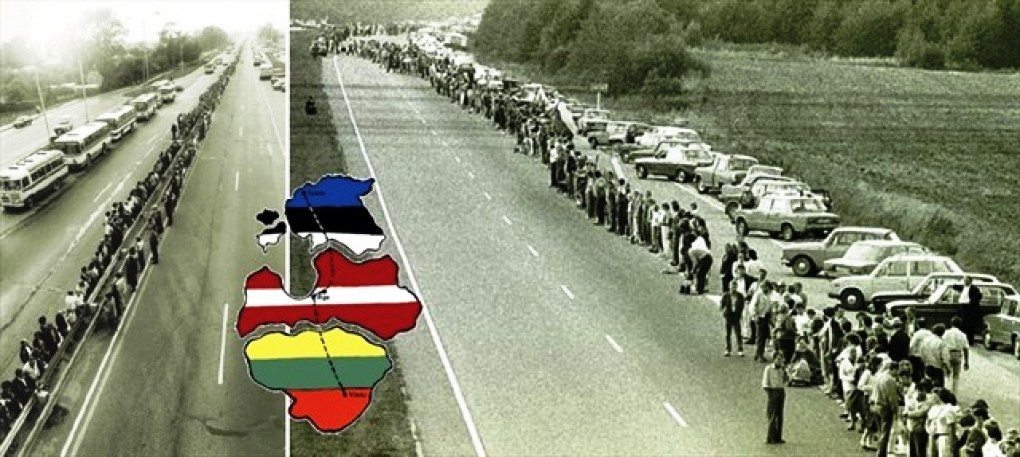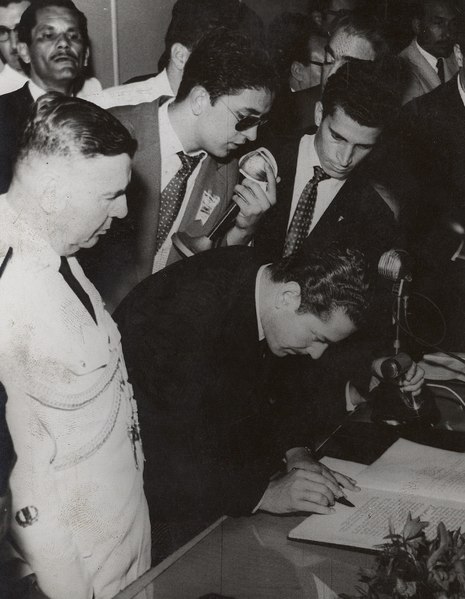* * *
Gorbachev is still in Moscow, where he will remain, at least as long as he does not accept the highly preferential invitations quickly extended him by the prestigious universities of Harvard, Stanford, and Boston after his downfall,1 or the regal hospitality offered by Juan Carlos I, King of Spain, in the renowned palace of Lanzarote, on the Canary Islands,2 or the university chair to which he was invited by the famous College de France.3
 Defeated in the East, the communist ex-leader’s only difficulty seems to be choosing among the many flattering invitations he is receiving from the West. Thus far, he has decided to write a syndicated series of articles for newspapers in the capitalist world — a world whose highest levels continue to provide him fervent and inexplicable support — and to travel to the United States amid great publicity to raise funds for the Gorbachev Foundation.
Defeated in the East, the communist ex-leader’s only difficulty seems to be choosing among the many flattering invitations he is receiving from the West. Thus far, he has decided to write a syndicated series of articles for newspapers in the capitalist world — a world whose highest levels continue to provide him fervent and inexplicable support — and to travel to the United States amid great publicity to raise funds for the Gorbachev Foundation.
Thus, even though Gorbachev is overshadowed in his own country — and seriously questioned in the West — Western magnates endeavor in various ways to maintain the floodlights of a flattering publicity beamed on the man of perestroika, who made a point, throughout his whole political career, of showing that his reform is not communism’s contrary but its refinement.4

The former Soviet owned Baltic States, Estonia, Latvia, Lithuania, officially became independent on September 6, 1991, after much protest not only from the Baltic Nation, but also from the US. TFPs in 20 countries around the world collected over 5 million signatures on behalf of Lithuania’s independence, the largest valid petition drive in history at that time, making it into The Guinness Book of Records.
As for the weak Soviet federation that was agonizing when Gorbachev was overthrown, it became a quasiphantasmal “Commonwealth of Independent States,” whose inter-member friction worries statesmen and political analysts. Several of these republics have nuclear weapons and the capability to launch them at a neighbor (or at the enemies of Islam, whose influence grows daily in the former Soviet world), causing great apprehension among those concerned for global balance.
The effects of these eventual atomic aggressions could be multiple. Principal among them could be the exodus of populations formerly contained by the Iron Curtain. Driven by the rigors of bitter winters and by the dangers of immense catastrophes, they might feel redoubled impulses to “request” the hospitality of Western Europe. and of American nations.
In Brazil, Lionel Brizola, Governor of the State of Rio de Janeiro, has already proposed (to the applause of the nation’s minister of agriculture) attracting farmers from Eastern Europe through government land-reform programs.5 Argentine president Carlos Menem, in contacts with the European Economic Community, has said he is willing to have his country accept many thousands of these immigrants.6 The head of the Colombian Foreign Office, Mrs. Nohemi Sanin, has stated that her country’s government was studying the possibility of admitting technicians from the East.7 This is how imminent the waves of invasion may be.
And what of communism? What happened to it? Enthralled at the perspective of a long-lasting universal peace, or even an everlasting peace that would abolish the terrible specter of a global nuclear hecatomb, most of Western public opinion was gripped by the sensation that communism had died.
The West’s honeymoon with this supposed paradise of amity and peace is gradually losing its harmony, as evidenced by the above-mentioned threat of all sorts of aggressions thundering in the territories of the defunct U.S.S.R. Will the Western impression that communism has ended prove any more reliable?

“Baltic Chain”: event that took place on August 23, 1989 in the three Baltic countries (Lithuania, Estonia and Latvia) – then still Soviet Socialist Republics – when about two million people joined hands to form a human chain more than 600 km long crossing the three Baltic republics and passing by the three capitals (Vilnius, Tallinn and Riga, respectively). This unique demonstration was organized to draw the attention of world public opinion to the common fate that had befallen the three republics. In fact, its date coincided with the fiftieth anniversary of the signing of the secret agreement known as the Molotov-Ribbentrop Pact, by which the Soviet Union and Nazi Germany divided Eastern Europe into spheres of influence, leading to the occupation of the three states by the Soviets. The Soviet rulers only admitted the existence of that pact one week prior to the Baltic Chain. The protest was peaceful.
At first, the voices that questioned the authenticity of communism’s demise were few, isolated, and poorly documented.
Nevertheless, little by little, shadows began to appear on the horizon. It was noted that in countries of central Europe, the Balkans, or the former U.S.S.R. some of the new holders of power had been important figures in the local communist party. The move toward privatization in all these countries, with the exception of the old East Germany, is generally more apparent than real, proceeding at a snail’s pace that reveals the lack of an entirely defined direction.
So, did communism die in these countries? Or did it simply enter into a complicated metamorphosis? The doubts in this matter are growing just as the last echoes of the universal rejoicing at the supposed collapse of communism are discreetly fading away.
The Western communist parties had withered in the sight of all at the crash of the first cave-ins of the U.S.S.R.

Recently published, Mr. Julio Loredo de Izcue shows that with Pope Francis, liberation theology is back with a vengeance after three decades of laying low. Click the bookcover for more information or to order yours today!
But already today several of them are reorganizing under new names. Is the change of names a resurrection? A metamorphosis? I am inclined to opt for the second hypothesis. As for certainties, only the future can give them.
This updating of the general scene in face of which the world is taking a position seemed indispensable for any attempt to impart a little light and order to a horizon in whose quadrants chaos is predominating. And what is the spontaneous path of chaos if not the unintelligible worsening of itself?
* * *
1 Cf. Folha de S. Paulo, December 21, 1991.
2 Cf. O Estado de S.Paulo, January 11, 1992.
3 Cf. Le Figaro, March 12, 1992.
4 See Part III, Chapter 2, Commentary — “Perestroika and Glasnost: Dismantling the Third Revolution or Metamorphosing Communism?”
5 Cf. Jornal do Tarde, Sao Paulo, December 27,1991.
6 Cf. Ambiro Finonciero, Buenos Aires, February 19, 1992.
7 Cf. El Tiempo, Bogota, February 22, 1992







